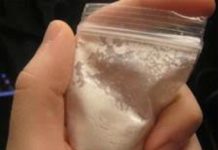Certain segments of the Canadian population who inject drugs are unable to receive treatment for their substance use disorder despite being motivated to get help, a 2016 study found.
The study, which was published in the journal Substance Abuse Treatment, Prevention, and Policy last year found that intravenous drug users that engaged in binge drug use were victimized through violence, were homeless, or had previously attended addiction treatment reported an inability to access treatment for their substance use disorder.
“It is imperative that additional resources go into ensuring treatment options are readily available when requested for these target populations,” researchers stated.
There were a total of 1,142 persons who inject drugs (PWID) and had not accessed any addiction treatment for six months prior to the study that were eligible to participate. Nearly 32 percent of the cohort were women, 56.4 reported having Caucasian ancestry, and 16.5 percent reported having sought treatment but were unsuccessful in doing so at least once during the study period. The median age of a participant was 41.9 years old.
A more interesting finding of the study was that persons with injected drug use that had longer histories of injecting drugs were not as likely to be blocked from accessing treatment. Researchers stated that this observation illustrates the necessity to help people with a shorter history of injecting drugs has fewer roadblocks to treatment, which in turn would reduce the potential for long term drug abuse.
One finding that had not been previously demonstrated was the fact that PWID, which had previously been in treatment found it more difficult to access treatment at a later date.
Researchers stated that previous studies have stated that a history of treatment for substance use disorder may be a telltale sign of severe addiction. However, that contradicts their conclusion that going in and out of treatment is common among… (continue reading)
















